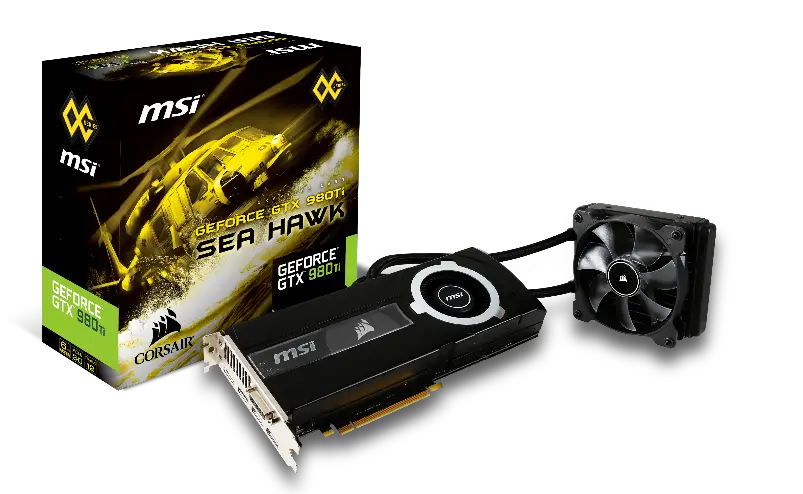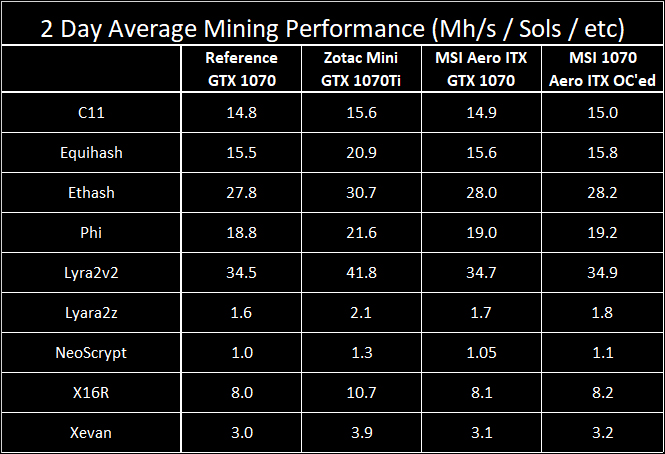
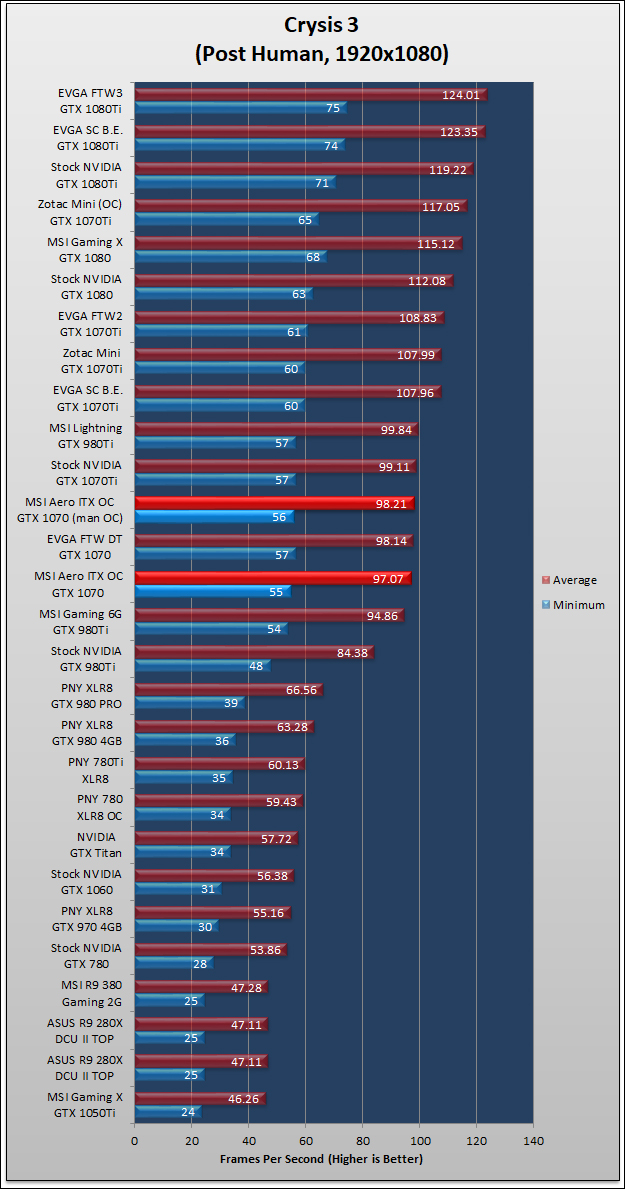
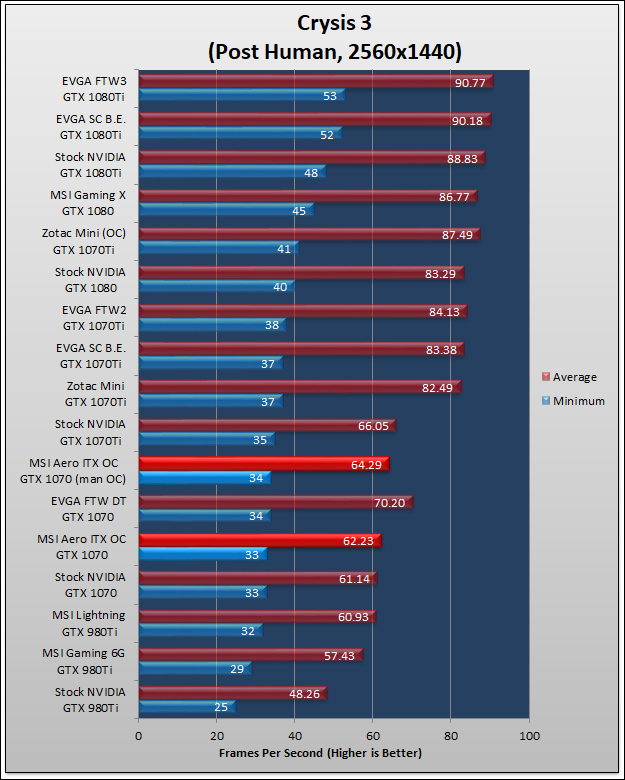

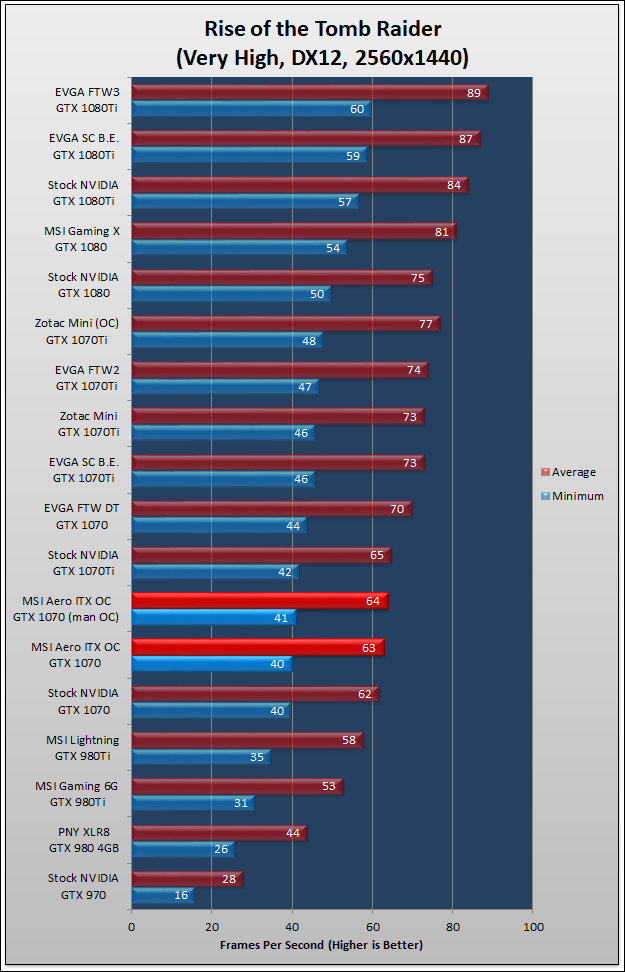
Before we start in on what you can expect from this card lets make one thing perfectly clear. This is not a card meant for manual overclocking. It is a ultra-compact card meant for really, really small cases. If you need more horsepower than what say a NVIDIA GeForce GTX 1070 Founder’s Edition can deliver… this is not the card for you.
With that caveat taken care of summarizing this card’s overclocking potential is easy: it doesn’t have any amount that is worthwhile talking about. While yes it does use a six-phase all digital ‘Military Class 4’ power delivery subsystem, power is not the bottleneck. Instead it is heat. Heat is the wall you will hit when trying to eek a bit more performance out of this card.
The reason for this bottleneck is simple to explain. Firstly, the ZeroFrozr heatsink does not take up the full dimensions of this small card. It should. Since it doesn’t its abilities to whisk heat away from the core is limited even more than the dimensions of the card would lead you to believe. Next is that it uses only three 8mm copper ‘U’ heat pipes. That is it. On its own this issue could easily be alleviated by simply boosting the amount of cubic feet of air that flows over it every minute. Sadly, MSI has included only one fan.
One fan, even a large 100mm Torx fan, is simply not enough when trying to push the frequencies. Even when manually set to 100 percent rotational speed (aka full buzz-saw mode) this fan cannot keep up with cooling demands that overclocking places on it. The end result is that you can expect to maybe push the boost from 1721 to the low 1750s if you want a long term overclock that is 100 percent stable and does not thermally limit the actual frequencies. Of course, if you only plan on gaming for an hour or two at a time you can push this a bit further to the mid 1770-1780 range… but in reality, your card will eventually throttle down to 1750 range after hitting 90 degrees Celsius. That is simply too high a temperature to run at if you want the card to last longer than its warranty period. Don’t do it.
The only bright side is that the memory is about as good as what MSI uses on the other mid-range GTX 1070s. That is to say you can push the frequencies from 8008(effective) to 8800(effective). Our sample’s memory was actually capable of doing higher than this but once again temperature degradation is going to be a serious concern if you push the memory and core frequencies higher than this combination of 1750 and 8800.
Needless to say, no overclocking enthusiast will be happy with this card… but why would anyone buy such a small card and expect anything better from it? These results do however stand in stark contrast with the slightly larger Zotac GeForce GTX 1070Ti Mini which can be pushed harder and faster than any ‘mini’ card has a right to be. Thus this is disappointing as MSI is a company known for their beefy cooling designs… just like Zotac. So coming up short is puzzling when MSI Twin and ZeroFrozr designs did set the ‘gold standard’ for cooling for many years.





